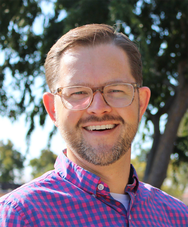Moving toward equity for foster youth
April 17, 2023

The following was written by David Haupert, administrator for District and School Continuous Improvement with Contra Costa COE.
To start our journey, we turned to Dr. Jamila Dugan and Shane Safir’s book, “Street Data.” Their vision for equity is based on the concept of centering the voices of the students and groups that have been at the margins of success and opportunity in the United States. Instead of relying on partial data measures such as state test results, Dugan and Safir urge educators to listen to the students and focus on their experiences as the pathway toward equity. This is our journey using that model:
1. Get clear on the data
We reviewed all available data. Suspension reports. Truancy rates. CAASPP results. SEL screeners. This satellite level data gave us a districtwide picture of foster youth where the students performed significantly below other groups. There was no clear system of support. There was no clear understanding of who our foster youth are, and our student information system data was very inaccurate.
2. Create a vision
We needed to understand our students better to develop a vision of equity that was both sustainable and coherent within the district. What are the students’ stories? Are they thriving? What do they need to thrive in our system? What does thriving mean to them?
Using MDUSD’s LCAP goals, our vision for foster youth was to:
- Create an equity-focused support system situated between Educational and Student Services so that foster youth have a liberatory experience in schools.
- Highlight the individual stories, both successes and struggles, of foster youth to eliminate the “single story” narrative.
- Impact the system so that foster youth have consistent support, focus and attention.
3. Collecting street data
The counselor I worked with set out to interview at least 90 percent of the roughly 55 students identified as being in foster care. They used asset-based empathy interview questions already developed by MDUSD to gain an understanding of the strengths, desires and needs of each student. It took our one counselor six weeks to complete all of these interviews. While our counselor did that, I completed a resource map of the community and district supports/services available for youth in foster care. This was an instrumental step because there was no one document that listed the supports available to these students. Now, the entire MDUSD system could identify the available supports and resources.
4. Sustainable and integrated systems
One of the primary challenges we faced was designing a system that was not siloed within one person or department. MDUSD was in the second year of developing a Multi-Tiered System of Support for each school site, and we hypothesized that building a MTSS for foster youth would be the most effective and sustainable approach. Using the information gathered from the resource mapping in the previous step, I developed a MTSS Framework for Foster Youth in MDUSD.
With the suggestion from our chief of educational services, we turned to our school counselors to help build a sustainable system of support. All school counselors were trained in the MTSS Framework and received summaries from the student interviews in January. They were then asked to meet with their students in foster care, connect them to the resources identified in the MTSS document and report back.
5. Monitoring for impact
Within 30 days of our initial training, 65 percent of our 29 sites with foster youth had followed up with their students. Within 60 days, that number climbed to 86 percent. Students received 504 plans, counseling services and tutoring support. For the first time all year, every site knew who their foster youth were.
We are now in a process of monitoring and regular data reviews so that we can continue to respond and anticipate student needs via student interviews, frequent check-ins and focus groups.
6. System-wide indicators
We are seeing great leading indicators. First, we have been able to identify and disrupt barriers or bottlenecks that limit the success of our students. We found sites that weren’t identifying students as eligible for credit reduction. We cleaned up the district data systems. We identified a need to engage registrars in anti-bias work as they assign credits from international students. Our lead metrics also include:
- 85 percent projected graduation rate.
- 11 percent projected decrease for chronically truant students.
- Increases in SEL assessment results.
7. Next steps and takeaways
We also recognize that this is just the beginning of working toward educational equity for foster youth. We can continue this work by:
- Celebrating our year one accomplishments.
- Embedding monthly data reviews and engagement within counselor meetings.
- Engaging families and county social workers in MTSS training.
- Increasing student voice and agency.
- Sharing our internal accountability data publicly and regularly.
- Training all MDUSD staff in anti-bias and trauma-informed practices.
- Using cycles of inquiry.
What I am most excited and encouraged by is that we have developed an equity-based model that is sustainable and poised to transform educational outcomes for foster youth.
To learn more about MTSS for foster youth in Mt. Diablo USD, please contact David Haupert at dhaupert@cccoe.k12.ca.us.
Contact Us
www.acsa.org
© 2023 Association of California School Administrators



